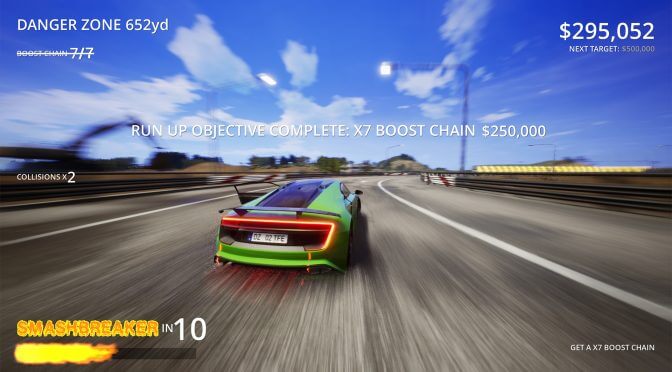Three Fields Entertainment has released Danger Zone 2 on Steam. Danger Zone 2 is a high speed driving game featuring speed, traffic and crashes that lets players loose onto the Freeways of the USA, the Motorways of the UK and the Autovias of Spain.
The game allows players to drive at high speed on real life roads crowded with everyday traffic and shunt, slam, flip, roll and jacknife as many vehicles as possible. Players will be able to create chaos across 26 of the world’s most notorious accident blackspots set in 17 unique locations around the world.
Danger Zone 2 features 8 vehicles including Sedentary Sedan, Chaotic Coupe, Really Crazy Taxi, Euro Truck and Formula One car, and comes with Objective Based Gameplay (as players will have to complete Objectives to earn Bonus Cash in each level).
Three Fields Entertainment has also revealed the game’s official PC requirements that you can find below.
MINIMUM:
-
- Requires a 64-bit processor and operating system
- OS: Windows 7 64 bit
- Processor: Intel i5 3.2GHz / AMD FX 8350
- Memory: 4 GB RAM
- Graphics: nVidia GTX 750ti / AMD Radeon R7 265
- DirectX: Version 12
- Storage: 12 GB available space
- Additional Notes: Supports game controller, mouse and keyboard and Cloud Saves
RECOMMENDED:
-
- Requires a 64-bit processor and operating system
- OS: Windows 10 64 bit
- Processor: Intel i7 3.5GHz / AMD FX 9590
- Memory: 8 GB RAM
- Graphics: GTX970 / AMD Radeon R9 290
- DirectX: Version 12
- Storage: 12 GB available space

John is the founder and Editor in Chief at DSOGaming. He is a PC gaming fan and highly supports the modding and indie communities. Before creating DSOGaming, John worked on numerous gaming websites. While he is a die-hard PC gamer, his gaming roots can be found on consoles. John loved – and still does – the 16-bit consoles, and considers SNES to be one of the best consoles. Still, the PC platform won him over consoles. That was mainly due to 3DFX and its iconic dedicated 3D accelerator graphics card, Voodoo 2. John has also written a higher degree thesis on the “The Evolution of PC graphics cards.”
Contact: Email

